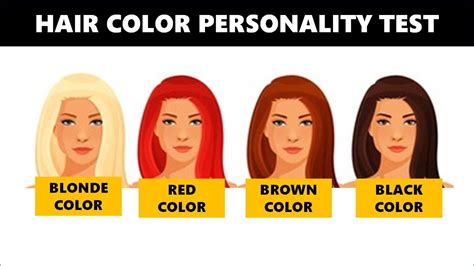Red hair, a striking and captivating hair color, holds a special place in human history and genetics. From ancient mythology to modern fashion, redheads have always commanded attention and sparked curiosity. This comprehensive article explores the fascinating world of red hair, delving into its genetic makeup, cultural significance, and potential implications.

Genetics of Red Hair
Red hair is a result of a rare genetic mutation in the melanocortin-1 receptor (MC1R) gene. This gene plays a crucial role in controlling the production of melanin, the pigment that gives hair its color. In people with red hair, the MC1R gene has a specific variant that results in the production of pheomelanin, a red-pigmented melanin.
The MC1R gene is located on chromosome 16, and the mutation responsible for red hair is inherited in an autosomal recessive manner. This means that both parents must carry the MC1R variant for a child to inherit red hair. However, even if both parents are carriers, only about 25% of their children will have red hair.
Red Hair Prevalence
According to the National Institutes of Health (NIH), only about 1-2% of the world’s population has red hair. This makes it one of the rarest hair colors. However, certain regions have a higher prevalence of redheads, such as Ireland, Scotland, and Northern England, where up to 10% of the population has red hair.
Cultural Significance of Red Hair
Throughout history, red hair has been associated with various cultural and social perceptions.
-
Ancient Beliefs: In ancient Egypt, redheads were considered sacred and associated with the sun god Horus. In Celtic cultures, they were believed to have magical powers or be seen as warriors.
-
Medieval Europe: During the Middle Ages, red hair was often associated with witchcraft and heresy. This led to widespread discrimination and persecution of redheads.
-
Modern Perception: In modern times, red hair has become a symbol of individuality, boldness, and attractiveness. It has been celebrated in art, literature, and fashion throughout history.
Potential Implications of Red Hair
Recent research has explored the potential implications of red hair beyond its physical appearance.
-
Melanoma Risk: Studies have shown that redheads have a higher risk of developing melanoma, the deadliest form of skin cancer. This is due to their reduced production of melanin, which provides protection against UV radiation.
-
Pain Sensitivity: Research suggests that redheads may be more sensitive to pain than individuals with other hair colors. This heightened sensitivity may be linked to genetic differences in pain pathways.
-
Cognitive Abilities: Some studies have indicated that redheads may have certain cognitive advantages, such as improved spatial reasoning and memory. However, more research is needed to fully understand these relationships.
Applications of Red Hair Research
The study of red hair and its unique characteristics has led to innovative applications in various fields:
Personalized Medicine: Understanding the genetics of red hair can help diagnose and treat melanoma more effectively. By identifying individuals at high risk, doctors can implement preventive measures and early detection protocols.
Pain Management: Research on pain sensitivity in redheads has the potential to develop new pain management strategies tailored to their specific needs.
Hair Care Products: Formulations specifically designed for red hair can address its unique texture and color care requirements. These products can enhance hair health, protect against damage, and maintain its vibrant hue.
Tables
Table 1: Red Hair Prevalence by Region
| Region | Percentage of Redheads |
|---|---|
| Ireland, Scotland, Northern England | 10% |
| Western Europe | 1-2% |
| Eastern Europe | <1% |
| Asia | <1% |
| Africa | Very rare |
Table 2: Potential Implications of Red Hair
| Implication | Description |
|---|---|
| Melanoma Risk | Increased risk |
| Pain Sensitivity | Heightened sensitivity |
| Cognitive Abilities | Improved spatial reasoning and memory (potential) |
Table 3: Applications of Red Hair Research
| Field | Application |
|---|---|
| Personalized Medicine | Melanoma diagnosis and treatment |
| Pain Management | Tailored pain management strategies |
| Hair Care | Products designed for red hair |
Table 4: Pros and Cons of Having Red Hair
| Pros | Cons |
|---|---|
| Unique and distinctive appearance | Higher risk of melanoma |
| Potential cognitive advantages | Increased pain sensitivity |
| Cultural significance | Historical discrimination |
Conclusion
Red hair is a captivating and complex human trait that has fascinated scientists, historians, and artists alike. Its unique genetic makeup, cultural significance, and potential implications continue to be explored and understood. As research deepens, we may uncover more applications that leverage the special characteristics of this fascinating phenomenon.
Additional Discussion Points:
- What are some common misconceptions about red hair?
- How does red hair affect a person’s self-perception?
- What are the emotional and psychological experiences of redheads?
- How can we promote acceptance and understanding of red hair diversity?
